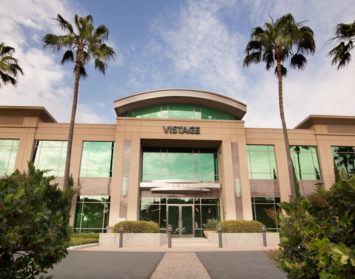Whether you are coming toward the end of an existing lease term and considering renewal or you’re out on the market looking for new space, it’s always a good idea to understand the needs and motivations of potential landlords. It’s also important to realize that the objectives of landlords and their lenders are not always aligned and are often subject to change based on the dynamics of macro-economic forces.
For example, just a few years ago during the 2006-2007 peak boom-times, it typically was “all about rates” for landlords. The rate trend line was strongly upward and so property owners were less concerned about occupancy levels and more focused on maximizing lease rates. Also, lenders and potential buyers assumed that rates would keep rising for the foreseeable future so vacancy levels were not as important to them.
Of course, we all know how much things have changed over the past few years. Today, instead of lease rates, for most landlords the focus now is “all about occupancy levels”. Landlords need to eliminate vacancies and drive up their overall capitalized lease assets. As a result, potential tenants currently have significant opportunities to drive major concessions in exchange for signing a multi-year lease.
If you have a lease that is expiring between now and the end of 2011, it’s likely that you can negotiate as much as a 25 to 40 percent rate reduction. But to get the best deal in both the short and long run, and also to protect against potential landlord insolvency, it’s wise to first do some homework and to consider all of the factors.
From a big-picture perspective, it appears that we are nearing a turning point and we may even have reached the bottom in the commercial real estate market. The deal flow has been picking up both in terms of new leases and in sales of commercial properties. However, there is still a lot of caution out there as well. That’s why occupancy levels have become so important. Any building that is full of tenants with multi-year leases is much more saleable in today’s market rather than one with lots of potential but lots of vacancies. In addition, landlords looking to refinance their properties are in a stronger position when they can show a solid portfolio of multi-year lease assets.
Don’t be afraid to ask.
Keep in mind that lease renewals are always more profitable for landlords than going out and finding new tenants. Every year real estate owners build into their financial models debt service, property taxes, operating costs, leasing commissions, tenant improvement costs, and vacancy. When an existing tenant renews their lease, the amount of tenant improvement dollars the landlord will fund are typically far less when compared to a replacement tenant. In addition to less capital outlay for a renewing tenant, the landlord also has zero down time. The difference for the landlord can be from 26% to 30% below their “asking” or market rental rate. In today’s market, a strong tenant can potentially leverage this advantage to a 40% or better reduction in lease rate. So be sure to ask for it.
Don’t be afraid to move.
On the other hand, if your current landlord approaches you about extending your unexpired lease, don’t feel compelled to just jump on the offer. Remember there are lots of other landlords out there who are just as motivated to secure your lease commitment and drive up their occupancy levels too. Many tenants think that moving is just too much trouble but, unless you have some very specialized facility requirements, the willingness to move can be a valuable negotiating advantage. In today’s market, landlords are typically offering moving allowances of $5 to $7 per square foot. In addition, we’re seeing Free Rent concessions of as much as 2 to 3 months per year of lease commitment. On a five-year lease, this can work out to a full year or more of free rent! Even if you end up extending your existing lease, it’s never a bad idea to test the waters and see what alternatives are out there.
Don’t leave money on the table.
The bottom line is to remember that your signature on a new lease document is extremely valuable to your existing landlord as well as to their competitors. With today’s focus on driving up occupancy levels, a solid, credit-worthy tenant enjoys even more negotiating strength. As always, be sure to perform your due-diligence to ensure that the landlord is in a strong enough position to follow-through on their commitments. It’s never useful to gain concessions that turn out to be empty promises. But, once you’re sure that the landlord is solid, don’t hesitate to ask for all that you can get.
Scot Ginsburg is an executive vice president of Hughes Marino, a global corporate real estate advisory firm that exclusively represents tenants and buyers. Contact Scot at 1-844-662-6635 or scot.ginsburg@hughesmarino.com to learn more.








